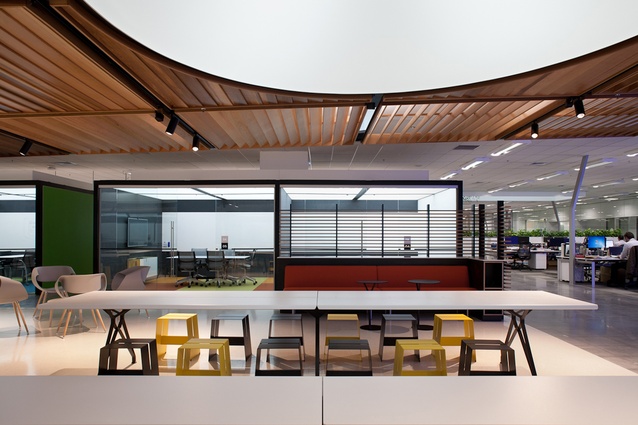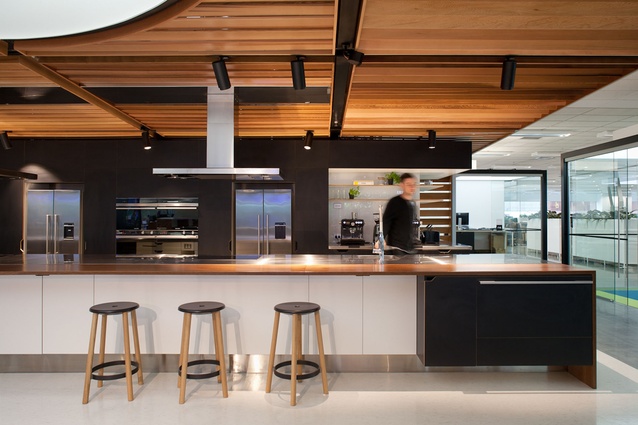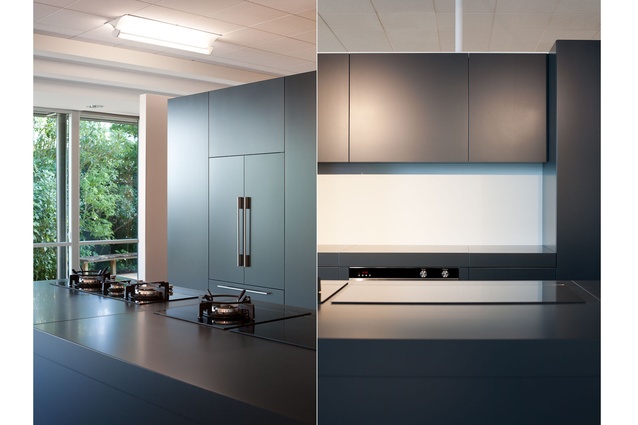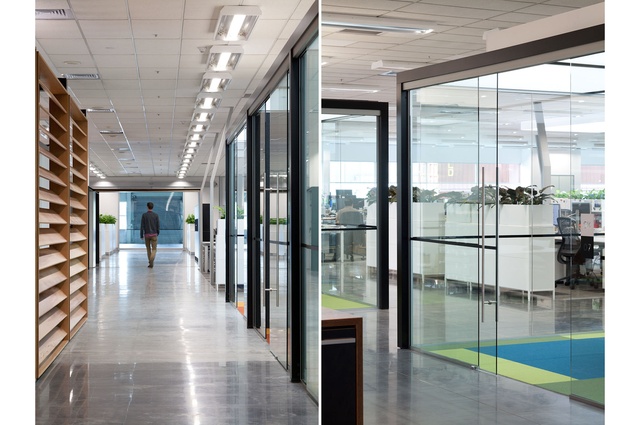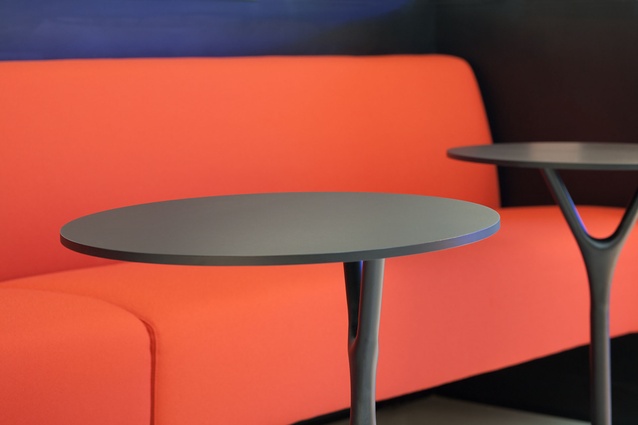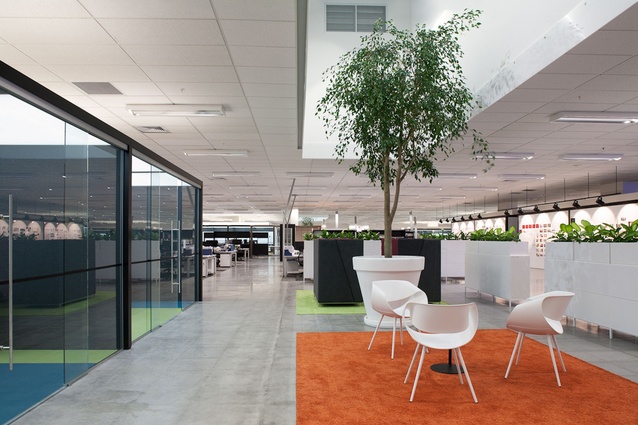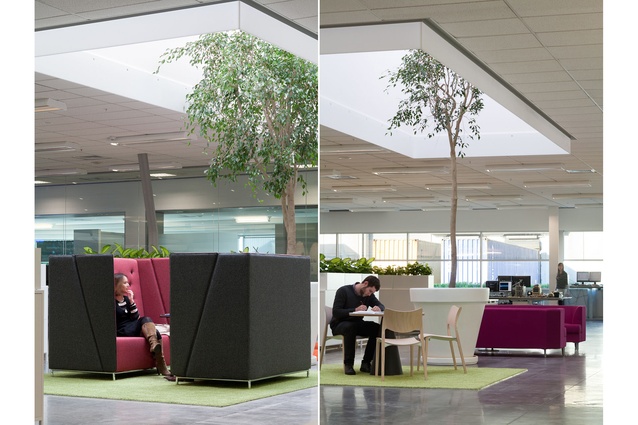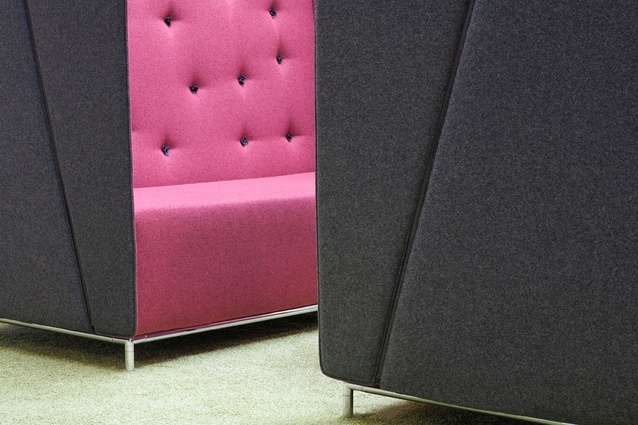Auckland Design Centre
A Fisher & Paykel appliance factory is converted to house its product designers and engineers. A clever exercise in big-box architecture or a metaphor for the shift from manufacturing to knowledge-based economies? Interior magazine sets out to discover the answer.
Incremental transformation of typologies, rather than unencumbered invention, is really how design happens. It is an iterative process in which evolutionary factors – political, environmental and social, among others – form what we see as contemporary and appropriate. The changes in use and aesthetics that result are a strangely Darwinist form of spatial design, in which particular architectural ideas evolve and survive as the ‘fittest’. This is a process that relies on adaptive reuse as the evolutionary environment gradually changes. This process has been happening in the United States in relation to big-box retailing. While still a dominant form of retail in most of the country, big-box retailing is now facing the challenges of increased internet competition, a renewed consumer consciousness around the downstream economic effects of large monopolies, and a renewed interest in the user experience offered by smaller retailers. The effect has been that the cavernous warehouses that once held such stores have begun to be vacated.
That is not to say that Walmart and its ilk are on the march to extinction… well, not yet anyway. But it does show how factors within the socio-economic environment start to disrupt the spatial forms of cities. When these stores are closed, huge clear-span warehouses that were custom-designed to the particular flavour of big-box retailing become available for reuse. What is left behind has potential for second lives. Many have already been repurposed as offices, libraries, and even churches. A very diverse range of examples points to the postmodern decorated shed as becoming an important source of readymade building envelopes (see Julia Christensen’s book Big Box Reuse). On our own shores, a parallel evolution can be tracked as factories that once created all manner of goods can be found awaiting transformation as manufacturing is sent overseas. One of New Zealand’s most prominent companies, Fisher & Paykel, which has been under the banner of multinational giant Haier since 2012, has recently undertaken the refurbishment of one such factory. The 5,000m² space has been transformed to create an office space aligned with the cultural reinvention of the company and the expected expansion of its Product Development team to more than 400 people in the next four years. Manufacturing is out and design and product development are in.
The evolution of the factory into one of the country’s largest single-floor-plate office spaces was designed by Jonathan Custance, with input from Fisher & Paykel’s senior strategic and design teams. The brief called for accommodation of the growing design teams as well as technical facilities to provide for the expected expansion through to 2018. “Additional laboratory and model shop facilities would be required to support increased development activity. There was also a strong motivation to create a high-quality environment to attract and retain skilled staff as well as strengthen engagement and communication within and across functional and project teams,” notes Mark Elmore of Fisher & Paykel. In response to this challenge, Jonathan Custance and his team adopted an approach of clarity. “The key principle behind the overall design was to make the knowledge visible,” notes Custance. This means not only achieving interlinked working environments, but also spaces where work can be shared and communicated with the likes of large presentation whiteboards.
The admission of natural light into the extraordinarily deep plan and the facilitation of teamwork and communication through the vast interior were two further requirements. To meet the former, substantial light-wells puncture the existing roof creating defined spaces of interaction below – complete with plants. Teamwork and communication are, in turn, facilitated through the creation of clusters within the larger interior. Mark Elmore explains that, “while it is important to foster cross-functional teams and give them project spaces, it was also important to Fisher & Paykel’s leaders that the expertise and knowledge within specialties is shared and developed.”
Collaboration is to be achieved through the interleaving of individual and team-based working environments. Acoustic disturbance in the large, interconnected space is reduced by transferring communication onto a wireless system, rather than using traditional ringing telephones. It is clear to see how the Design Centre functions as a space of knowledge production, through its various design teams and labs. Mark Elmore describes the role that space, rather than equipment, plays: “Collaboration in functional teams; is different to project teams, there is less need for stuff and more need for space to come together and discuss a particular issue”.
The design also picks up on themes that Fisher & Paykel has been developing for some time (in association with Alt Group) such as the ‘Social Kitchen’. “The Social Kitchen is a site of sociability, of collaboration and creativity, of sharing and eating together,” states Fisher & Paykel. But it is more than that. Mark Elmore notes: “Fisher & Paykel is interested in the lives lived around its products and the best way to bring this touch-point into the workplace is a useable kitchen where designers, engineers and evaluators use the products daily.” The inclusion of the central Social Kitchen and several other kitchen areas highlights this strategy, with the aim of providing product insights that go beyond the laboratories that encircle the office space.
Overall, the design implements techniques such as team cluster planning and porous social and work spaces that are tried and tested in contemporary office spaces – and does so very well. However, the execution of this type of office design within the factory setting is demonstrative of a larger evolution in our economy towards knowledge production rather than material manufacturing. The movement of manufacturing offshore and the desire to repurpose its former spaces within the city will result in wider urban design challenges as well as a continued evolution of this typology.
—>

